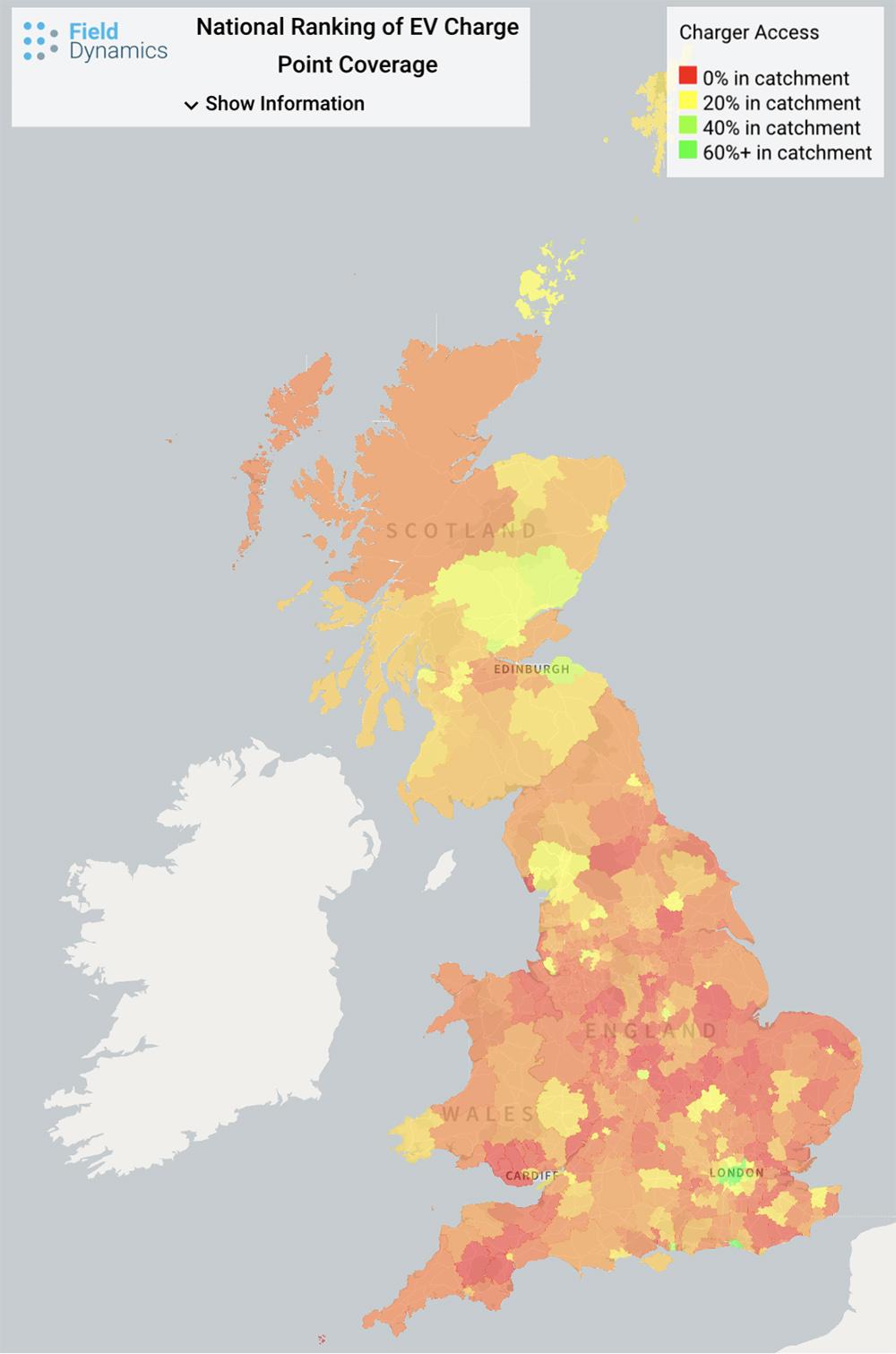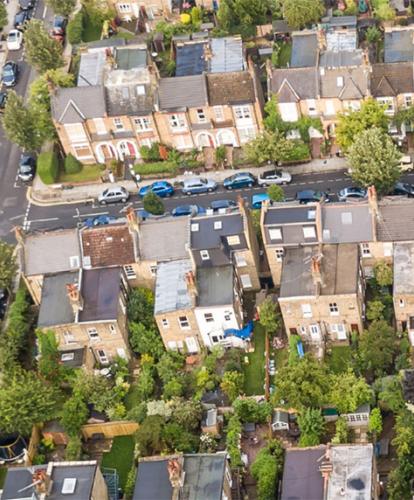A new study has shown that nine out of ten households in Great Britain that rely on public charging for EVs are not within close walking distance of a charger. That’s according to a study by Field Dynamics in partnership with Zapmap.
The new research highlights the importance of understanding the location of residents who rely on public EV charging before planning residential charging sites. It demonstrates how better residential EV charging can be achieved by locating public chargers in focused locations, and how surprisingly few units will be needed.
Field Dynamics have used Ordnance Survey mapping to identify the almost eight million GB households outside of London are ‘on-street’ residences, that don’t have access to off-street parking. These will therefore rely on on-street EV charging once they move to an electric vehicle.
Matching that with data from Zapmap, the study identified 7,563 charge point sites outside of the capital, and then analysed the number of on-street households within a five-minute walk of the nearest charging location.
Only around one in ten households were inside a reasonable five-minute walk to charge their car, which reduces the convenience and appeal of switching to an EV for many drivers.
The news isn’t dreadful however, as research has found that results can be achieved with careful planning. Brighton & Hove Council achieved 67% coverage of on-street households with the addition of just 139 charge points. It follows that most councils will need to install a few hundred units to ensure there is access to a public charge point within a five-minute walk.
An interactive map of the results can be found here, with further details of the study available here.

Field Dynamics Managing Director, Ben Allan, said: “Placing public chargers is a difficult process as it requires the balancing of many conflicting priorities. But now there is a bedrock of robust data that planners can use to select their sites, placing fewer chargers at lower cost while providing a much more inclusive service.”
COO and Joint MD of Zap Map, Melanie Shufflebotham, said: “Providing convenient public charging for households with no off-street parking is a key element in the mass uptake of electric vehicles (EVs).
“This unique analysis combining the Zapmap and Field Dynamics data sets provides both a high-level comparison between towns and also identifies down to a street level where there is a real gap in charging provision. We believe this data will be a great tool for organisations when making decisions on where to install additional charge points.”



